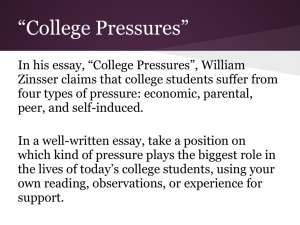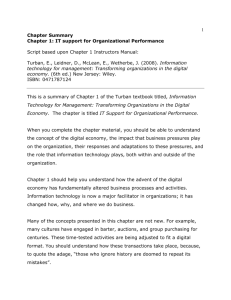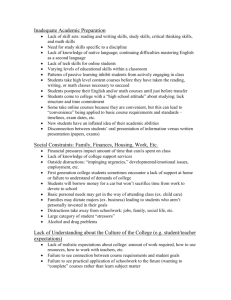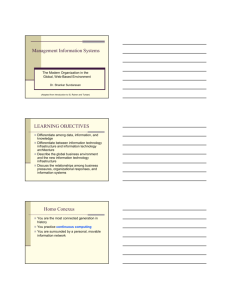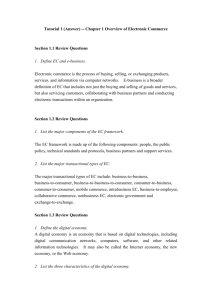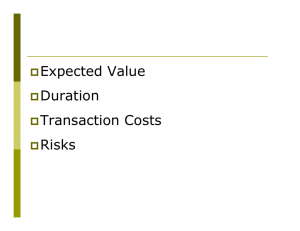33% (5 out of 15 correct)
advertisement
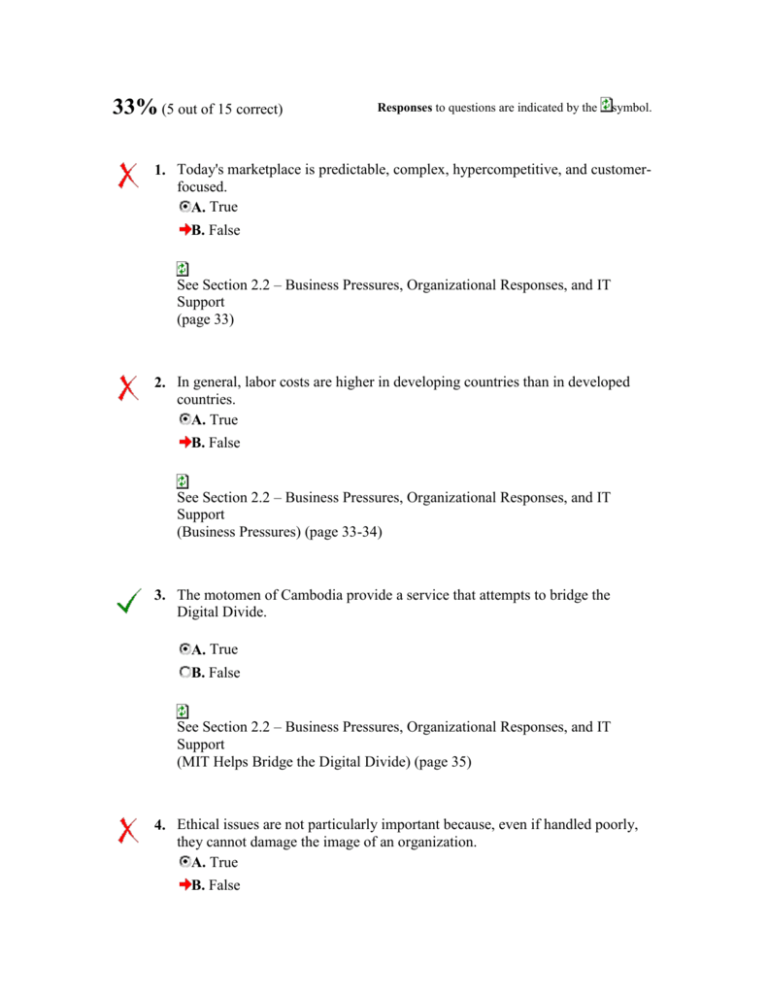
33% (5 out of 15 correct) Responses to questions are indicated by the symbol. 1. Today's marketplace is predictable, complex, hypercompetitive, and customerfocused. A. True B. False See Section 2.2 – Business Pressures, Organizational Responses, and IT Support (page 33) 2. In general, labor costs are higher in developing countries than in developed countries. A. True B. False See Section 2.2 – Business Pressures, Organizational Responses, and IT Support (Business Pressures) (page 33-34) 3. The motomen of Cambodia provide a service that attempts to bridge the Digital Divide. A. True B. False See Section 2.2 – Business Pressures, Organizational Responses, and IT Support (MIT Helps Bridge the Digital Divide) (page 35) 4. Ethical issues are not particularly important because, even if handled poorly, they cannot damage the image of an organization. A. True B. False See Section 2.2 – Business Pressures, Organizational Responses, and IT Support (Business Pressures, Ethical Issues) (page 36) 5. The Full Body 3-D Scanner from Bodymetrics allows designers to create perfect-fitting clothes. This process is an example of mass production. A. True B. False See Section 2.2 – Business Pressures, Organizational Responses, and IT Support (Organizational Responses, Make-to-Order and Mass Customization) (page 38) 6. For most firms, the Internet decreases the threat of new competitors. A. True B. False See Section 2.3 – Competitive Advantage and Strategic Information Systems (Porter's Competitive Forces Model) (page 40) 7. Information-based industries are in the greatest danger from substitutes. A. True B. False See Section 2.3 – Competitive Advantage and Strategic Information Systems (Porter's Competitive Forces Model) (page 40) 8. Internet-based systems are changing the nature of competition and industry structure. A. True B. False See Section 2.3 – Competitive Advantage and Strategic Information Systems (Porter's Competitive Forces Model) (page 40) 9. Targeting a narrow segment of a market and be the best in quality, speed, or cost in that market is the differentiation strategy. A. True B. False See Section 2.3 – Competitive Advantage and Strategic Information Systems (Strategies for Competitive Advantage) (page 41) 10. As computers gain in intelligence and capabilities, the competitive advantage of replacing people with machines is increasing rapidly. A. True B. False See Section 2.4 – Why Should You Learn About Information Technology? (Will My Job Be Eliminated?) (page 45) 11. Ergonomics has little to do with computing in the workplace, because people are used to using keyboards. A. True B. False See Section 2.4 – Why Should You Learn About Information Technology? (IT Impacts Employees at Work) (page 46) 12. Information technology provides Toronto International Airport with all of the following except: A. increased costs B. competitive advantage over its rivals C. enhanced operations D. enhanced customer experience E. none of the above See Chapter Opening Case (page 28) 13. Market pressures include which of the following? A. local economy B. weak competition C. homogeneous workforce D. weak customers E. low-cost labor offshore See Section 2.2 – Business Pressures, Organizational Responses, and IT Support (Business Pressures, Market Pressures) (pages 33-34) 14. The workforce in developed countries has all of the following characteristics except: A. more diversified B. fewer women C. more single parents D. more persons with disabilities E. more minorities See Section 2.2 – Business Pressures, Organizational Responses, and IT Support (Business Pressures) (page 34) 15. Today's customers have which of the following characteristics? A. less knowledge about products B. less sophistication C. difficulty in finding information about products D. lower expectations E. able to buy physically and electronically See Section 2.2 – Business Pressures, Organizational Responses, and IT Support (Business Pressures) (page 34) Retake Test
